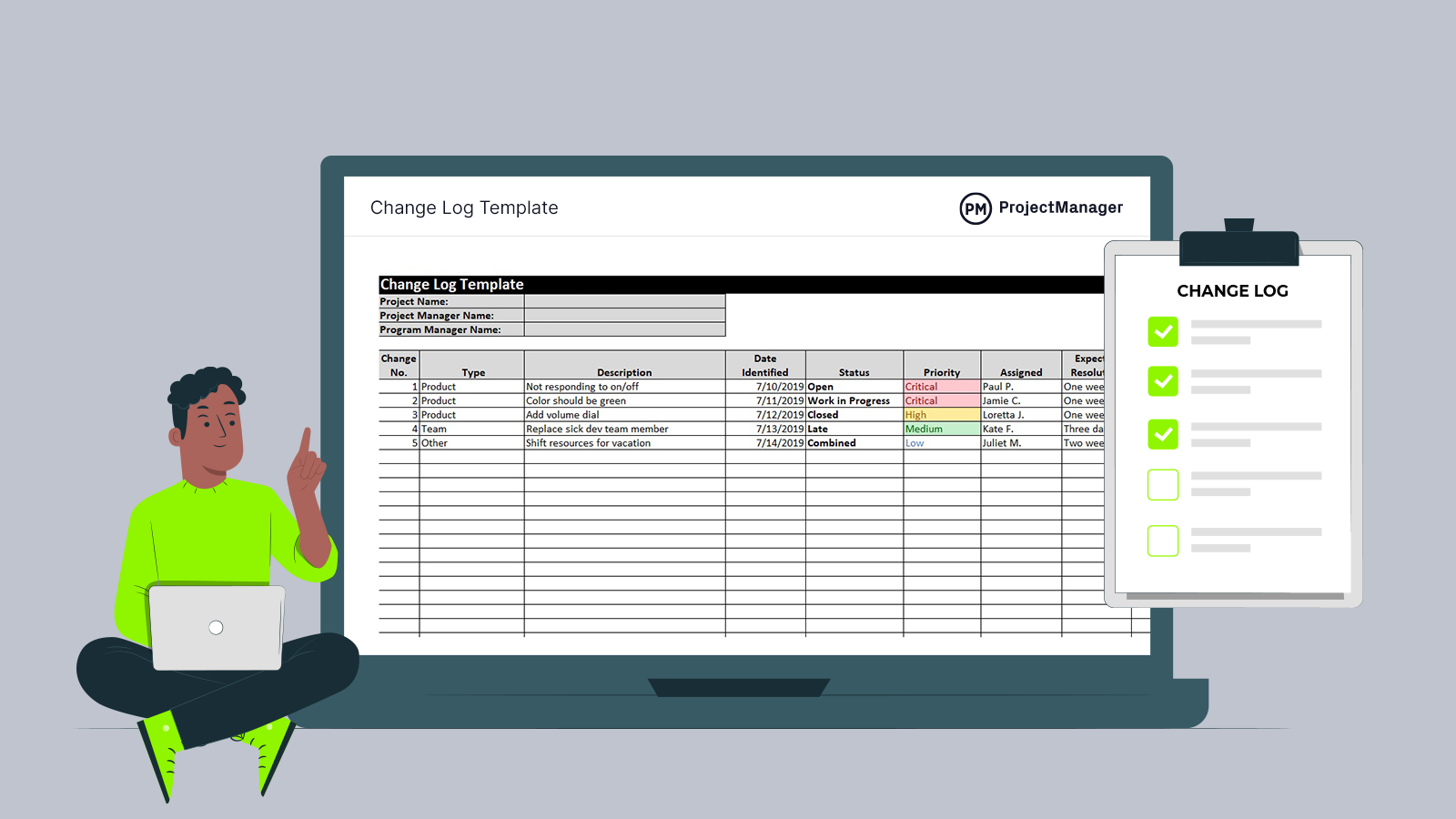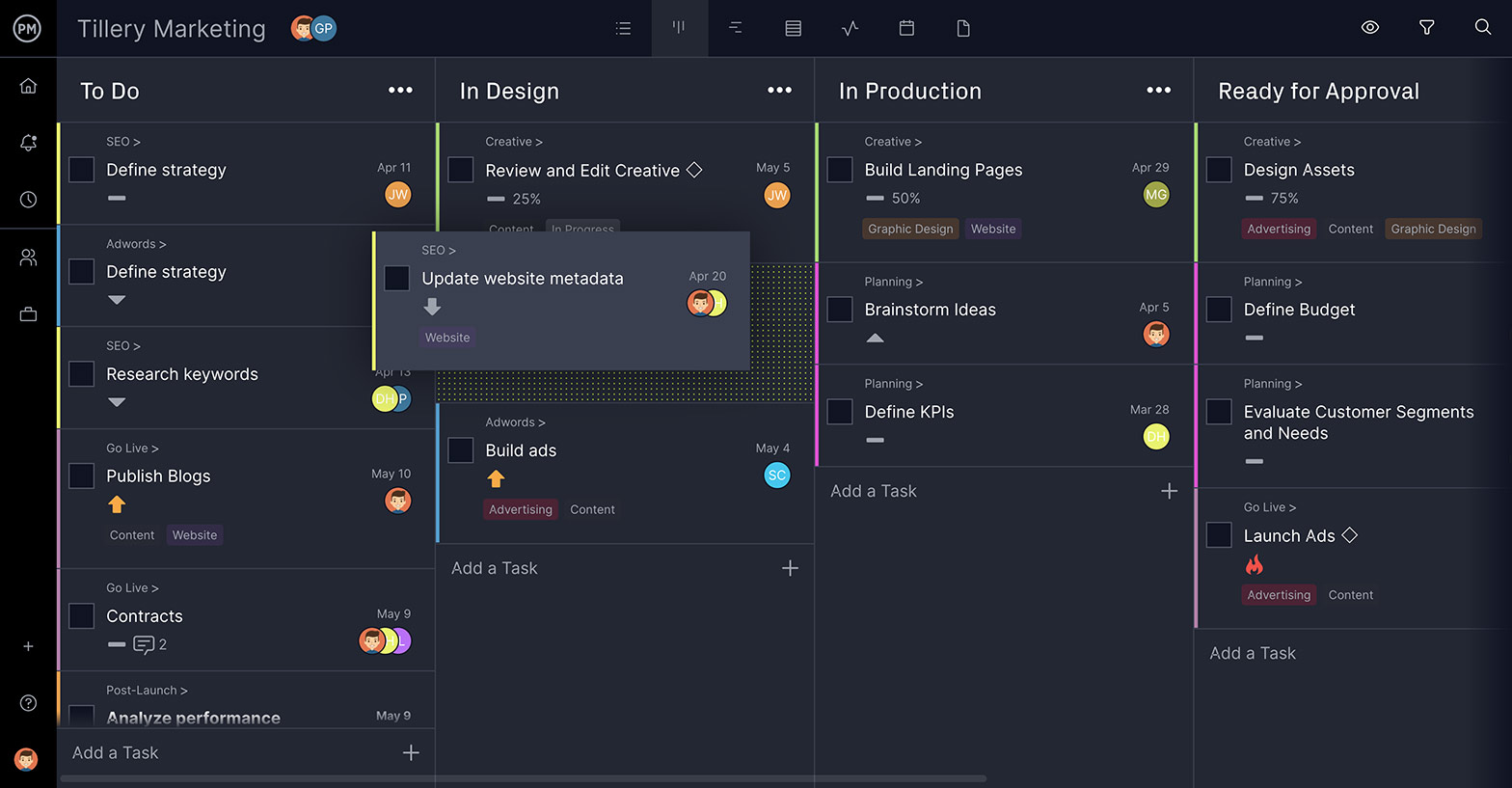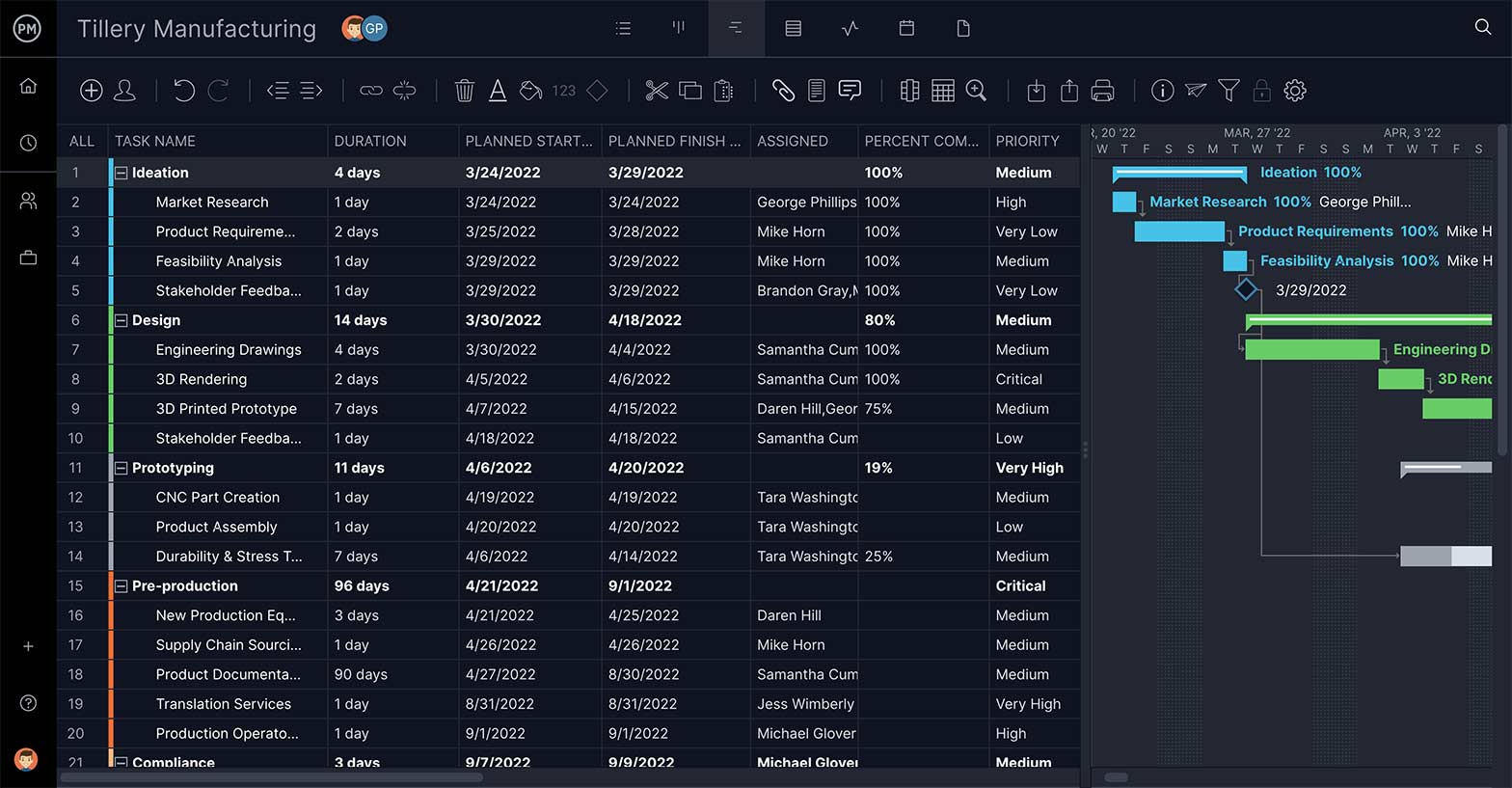Projects are a series of decisions. Each decision should, ideally, be the result of thorough research, counseling from the team and historic data. Project managers use a decision log to keep stakeholders updated on who authorized a decision and how it came about.
A decision log is a critical communication tool that all project managers need to understand. You can use project management software, templates or simply a notepad to track decisions. But before we get into how to make one, let’s better understand the definition of a project decision log.
What Is a Decision Log?
A decision log is a record of decisions that lead to a choice you make during a project. It can be meeting information, a record or a document of the project—it’s all compiled in a decision log and passed on to the project sponsor.
Communication problems are death to a project. A decision log serves as a communication tool that delivers supporting information to stakeholders. Decisions don’t just happen in scheduled meetings: they can also be made in casual meetings or between a couple of team members. A decision log documents all of that information.
A decision log, therefore, is a list of critical decisions that have been agreed upon over the course of the project. While the project decision log is not used by everyone involved in project management, it has definitely been gaining traction.
Why Do You Need a Decision Log?
Decisions can make or break a project. Stakeholders have a vested interest in the decisions that have been made. Just as they are updated regularly with stakeholder presentations and status reports, a decision log explains why decisions were made and who authorized them.
Documentation is key for projects, and while the mainstream project management world might not have yet fully embraced the decision log, they have used thorough documentation forever. Documentation offers historic data necessary to plan future projects and also acts as part of a risk management plan when looking at decisions.
A decision log can merely be a reminder of the course of action. There are many decisions made during the life cycle of a project, and sometimes people on the project team need a reminder to avoid unnecessary conflict. It also explains who made that decision and why, which can help keep the team from disagreeing.
Having a project decision log be the one source of truth, accessible to all and easy to share with stakeholders is essential to running a successful project. ProjectManager is online software that connects hybrid teams, managers and stakeholders with a real-time work management tool.
Keep your project decision log, change log, issue log, risk log, action log, raid log, risk register or any log you use on the task list view of our software. You can attach files, share them with the team and get notified as new items are added. Join the 35,000-plus users worldwide and get started free with ProjectManager today.

Elements of a Decision Log
A decision log helps with change analysis because it captures key decision-making data. Basically, it’s like a spreadsheet. Each column notes a specific part of the decision. Here are some of the items that should be included in any decision log:
- Project name: Keeps all the decisions made in the project together
- Project manager: The person in charge
- Identification number: Assign one to each decision to make it easier to refer to
- Decision Title: Titling a decision differentiates it from others made over the life cycle of the project
- Date: When you made the decision and any deadlines related to it
- Area: Which aspect of the project you’re discussing
- Description: An overview of the decision you’ve made
- Rationale: The reason for the decision and any comments or disagreements cited
- Alternatives: Other options you discussed but decided against
- Expected impact: Briefly outline what you think the decision will change
- Contributors: List everyone who contributed to the decision
- Approval signature: The sign-off, usually from the project manager

Get your free
Change Log Template
Use this free Change Log Template for Excel to manage your projects better.
Decision Log Example
Let’s make up a theoretical case to go through the process. For our decision log example, let’s contemplate a construction site that is wondering whether to use steel or wood when framing a smaller backhouse to the larger building.
The decision log would have all the data detailed above, such as the project name, the name of the project manager, an ID and the title could be something like “Backhouse Frame.” The people involved would be the project manager, architect and contractor at a minimum.
The discussion might be about price versus safety. Collect these pros and cons and add them to the project decision log. Explore the impact and alternatives, such as how steel would impact the budget and wood might require extra stabilizing elements. It’s a way to go through the best practices and see which is most suited for the project.
Make a decision, jot it down in the log and have the project manager sign off. Then, deliver the document to the stakeholders of the project, say the owner of the property who contracted the work. This gives stakeholders context for the discussion and decision, as well as guides the subcontractors when making the structure.
How to Use a Decision Log
Use a log whenever there’s a decision made in the project. That doesn’t necessarily mean minor decisions, but the more the better. Include any decision that has an impact on the project. Chances are, stakeholders will get upset at some point and demand to know why this, that or the other thing was done. The decision log is a way to communicate to them and also support the decision.
Therefore, a project decision log is not important as you are writing it, but more so when you are put in a position to defend your decision. If you are challenged or a decision is questioned, the log is there to back you up.
If a decision log is revised, it should be noted in the decision record. You want to document that decision as well. Explain why the decision was made and why it was changed. Then, update the log and create a new one reflecting the change.
Decision Log Templates
You can make a decision log yourself on any spreadsheet or even word processing app, but there are lots of free decision log templates that lay it out for you if that’s easier. Here are a few of the more popular ones we found online.
SampleTemplates
SampleTemplates has over nine different decision log templates for PDF and Word. They cross a number of different industries, so you should be able to find the template that fits your particular needs.
WordTemplatesOnline
WordTemplatesOnline has free decision log templates for Excel, Word and a PDF. They offer a variety of different log templates for various kinds of business meetings, such as guidelines and principles for retirement plans, one that captures key decisions and risks and others that include priority, status and more.
Of course, templates are static and can’t be used for effective collaboration. Rather than use a decision log template, it’s better to use software to manage your decisions and track your project changes.
How ProjectManager Helps With Decision Logs
ProjectManager is cloud-based work management software that connects hybrid teams and helps them work more productively. With multiple project views to suit everyone’s work style and real-time data to foster collaboration and better monitor projects, ProjectManager is also a great way to track decision-making.
Use Dashboards to Track KPIs
Before you can make a decision, you need data to give you better insight into the problem. ProjectManager’s real-time dashboard and one-click reports collect project metrics automatically. The dashboard tracks time, cost, workload and more, giving you an instant status report.

Create Visual Workflows with Kanban Boards
Instead of using a static template as your decision log, use the kanban board view. A kanban board is a visual tool that shows workflow. You can set up each column as one of the categories on your decision log and the cards can capture the relevant data. Then, you can use the feature to assign and track the progress of that change after it’s been authorized.

Follow Your Plan on Gantt Charts
In fact, you can plan all the changes made to your project with ProjectManager’s Gantt chart. Just toggle from the kanban to the Gantt chart view and you’ll see the work laid out on a project timeline. Now you can add dependencies, filter for the critical path and set a baseline to track your planned effort against your actual effort.

ProjectManager is award-winning software that connects teams no matter where they are, what department they work in or their skill level, and gives them the tools to work better together. Our work management software has resource management tools, timesheets and more to help you work more efficiently. Join teams at NASA, Nestles and Siemens who already are using our software. Get started with ProjectManager now.

